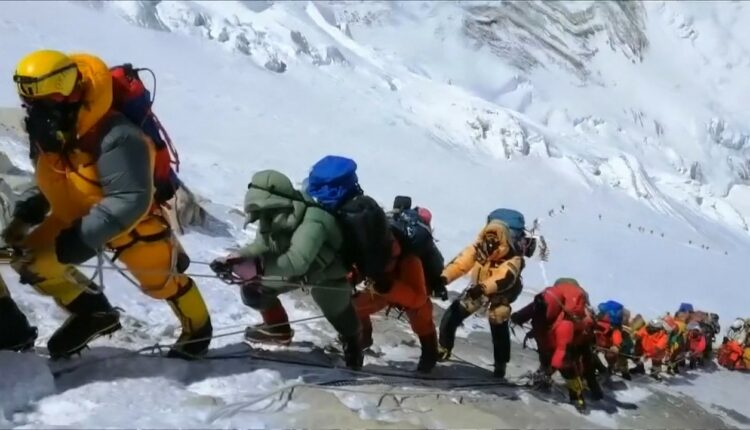Overtourism and Climate Challenges Weighing on Travelers
Mount Everest remains a magnet for adventurers worldwide, yet the repercussions of overtourism and climate change bring serious concerns to the forefront for authorities in Nepal. The growing influx of visitors paints a complex picture for both safety and ecological integrity.
The continuous allure of tackling the world’s tallest peak as part of a bucket list travel experience prompts many to embark on this daunting journey, often without fully comprehending the inherent risks involved. Unfortunately, during the climbing season of 2023, 18 lives were lost on the mountain, marking a record-high annual toll and illustrating the grave dangers that climbers face.
While foreign tourists made up a majority of the casualties, what raises alarm is that many victims included local guides and support personnel, highlighting the direct impact of this booming tourism on the very individuals who facilitate these expeditions.
Statistics on Everest and Government Initiatives
Over recent years, the dynamics of climbing Mount Everest have shifted dramatically. Prior to 2019, annual climbers averaged around 800. However, a surge in **revenge travel** following the pandemic has seen this number ascend to 1,000 per year. This rapid increase is fraught with consequences for the local environment and has significant implications for the Nepalese economy.
Environmental advocates warn of excessive waste generated by both climbers and campers, further complicating the situation. Recent analyses reveal three critical challenges plaguing Mount Everest:
-
Overcrowding leads to hazardous conditions, particularly in the so-called “death zone,” where lengthy queues can exacerbate risks for climbers;
-
Heightened traffic to the mountain causes accumulation of waste, resulting in a deterioration of local ecosystems;
-
Inadequate safety measures from budget tour operators contribute to an alarming rate of fatalities each climbing season.
In response to these pressing issues, the Nepalese Supreme Court issued an order in April of last year, urging the government to enforce stricter regulations on climbing expeditions and waste management on the mountain. This directive emphasizes the need to prevent littering and regulates the number of climbers permitted to ascend, even if such measures affect revenue generation via **royalties**.
In January, authorities from Nepal and Tibet rolled out new regulations concerning climbing routes, scheduled to come into effect in September 2025 at the conclusion of the primary climbing season. Key changes include:
-
A requirement for one guide for every two climbers above 8,000 meters, effectively prohibiting unguided climbs;
-
New climbing permits for foreign climbers have been set at US$15,000—a **36%** increase over previous fees;
-
Expedition companies must provide life insurance coverage for guides amounting to at least 1.5 million rupees;
-
The daily minimum wage for high-altitude guides has been established at 1,200 rupees;
-
Climb organizers are mandated to submit a recent photo of each climber along with the mountain range;
-
Climbers will be responsible for taking all their trash back to base camp for proper disposal.
The implications of these new regulations aim to tackle both safety and environmental concerns, but they also reflect the ongoing need for a balance between tourism and sustainability. This evolving landscape of Everest tourism also has ramifications for how transport options are arranged for climbers and tourists alike.
Summarizing the Impact
In navigating the complex issues around overtourism and safety on Mount Everest, it becomes evident that visitors must consider these factors along with their travel plans. The rising awareness on the environmental footprint of elevated tourism could reshape future climbing experiences significantly.
Additionally, engaging with local travel services like GetTransfer can offer tailored transport choices that prioritize safety and economy, making the journey to Everest smoother and more efficient for everyone involved. Personal experience prevails as the best teacher; even the most thorough reviews can’t fully reflect what mountain climbing entails. On GetTransfer, hiring a car with a driver from **verified providers** at competitive **prices** not only empowers you to make informed choices but also enhances your travel experience.
Ultimately, as travelers take the plunge into their adventure, **GetTransfer.com** stands out by providing an extensive selection of **vehicles**, accommodating a range of **fares** for every budget, making the journey smoother every step of the way. With this in mind, get ready to hit the road; whether it is in a taxi, a luxurious **limousine**, or a dependable cab, **book your ride** now to make the most of your adventure! GetTransfer.com


Comments